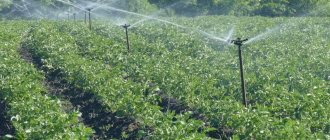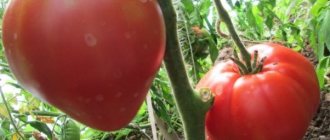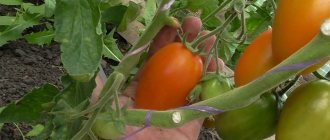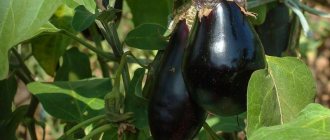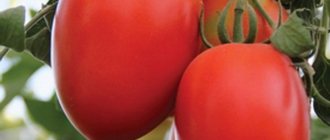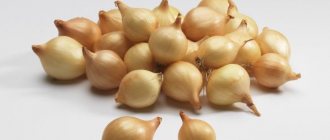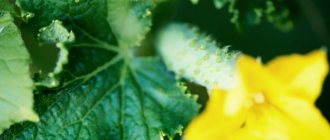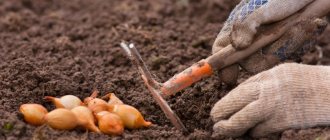Radishes are loved by many because they are one of the earliest sources of vitamins in the spring menu. True, in recent years many varieties and hybrids have appeared that are quite easy to grow in greenhouses even in autumn and winter. And due to their resistance to bolting, such radishes can be safely grown in the summer heat. One of these hybrids is Cherryat F1 radish.
Description
The Cherriet radish hybrid was obtained by breeders of the Japanese company Sakata Seeds Corporation in the early 2000s. The originator and applicant for registration of the hybrid in Russia was the subsidiary company Sakata Vegetables Europe SAS, located in France. In 2007, Cherryat radish was already registered in the State Register of Russia and allowed for cultivation throughout our country.
Since this hybrid, unlike most radish varieties, is not particularly sensitive to day length, it can be grown both in open ground and in greenhouses during the spring and autumn periods.
For some reason, many sources, including the description of the variety from, emphasize the early ripeness of the Cherriet radish. But judging by the characteristics of the variety in the State Register, as well as reviews from gardeners, Cherryat radishes belong to the mid-late varieties, that is, they fully ripen approximately 30 days after germination.
The rosette of leaves is quite compact, growing partly upward and slightly to the sides. The leaves are gray-green in color, obovate in shape, tapering at the base.
The root crop of the Cherriet radish itself has a round shape with a convex head, and the color is traditional red.
The pulp is white, juicy, tender, and not at all prone to flabby even in unfavorable growth conditions.
The taste and commercial qualities of this hybrid are assessed by experts as excellent, the spiciness is moderate.
Cherryat radishes are well transported and can be stored for quite a long time - up to a month in the refrigerator.
Cherryet is capable of growing to a good size; on average, the weight of one root crop is 25-30 grams, but radishes measuring 5-6 cm and weighing up to 40 grams are not uncommon. At the same time, large root vegetables, even when clearly overgrown, never have voids in the pulp - they are always juicy and fresh.
The Cherriet hybrid is famous for its productivity, which averages 2.5-2.7 kg/sq. m.
Comment! With good care, more than three kilograms of radish roots can be harvested from a square meter of land.
Cherryat radish is also highly resistant to various diseases: fusarium, blackleg, clubroot.
Cherryat radish f1: reviews from gardeners
Cherryat radish: photo of the variety
- Anastasia Aleksandrovna, Sverdlovsk region: “The Cherriet f1 radish variety has an excellent yield indicator; of all the varieties that I grew on my plot, the Cherriet radish is the most productive. It’s a pity that the variety cannot be classified as an early ripe variety; I would like to start enjoying this delicious radish as soon as possible.”
- Ekaterina Vasilievna, Chelyabinsk region: “I have been growing Cherryet radish f1 for a very long time. The variety does not form flower stalks, has no voids in the root crops (even if the vegetables are overgrown), the fruits of the Cherriet radish variety themselves are quite large, and they taste very pleasant. It’s also very pleasing that the Cherriet radish variety has good immunity to various diseases and pests.”
Advantages and disadvantages
Cherry radish has many advantages over other varieties.
| Advantages | Flaws |
| Large size of root vegetables | Demanding on sunlight |
| Not prone to forming flower stalks | Not the earliest ripening dates |
| Lack of pronounced sensitivity to daylight hours | |
| There are no voids in the fruits even when overgrown | |
| Compact leaf rosette | |
| High yield | |
| Disease resistance |
Farmer reviews
According to farmers, Cherryat f1 radish is exactly the crop that should be grown in any region, regardless of the scale of production. Root crops are good for both personal farming and commercial purposes.
Anton, Bryansk : “I liked the Japanese hybrid for its yield and fruit size. With good watering, the root crops reached 5-6 cm, which is quite consistent with the advertising photos. Moreover, these giants have no voids inside; they are juicy and tasty. I sowed seeds in a greenhouse during frosts, and later in open ground. I didn’t observe any bolting, despite the hot summer.”
Varvara, Omsk : “I planted Cherriet and understood why gardeners choose imported seeds. The leaves are small, and the fruits are juicy and tasty. Growing it is a pleasure, absolutely no problems during the growing season and no diseases. The taste is more sweet than spicy, which suits me just fine.”
Features of cultivation
The main feature of the Cherryat F1 radish is that even in hot weather and long daylight hours in summer, it is not prone to the formation of flower shoots, like many of the radish varieties. Instead, the underground part of the plants is actively filled, for the sake of which this crop is actually grown.
For this reason, the growing period for Cherryat radish is not limited to just the spring or autumn season. It can be sown and harvested richly throughout even the hottest summer.
In the open ground
Typically, radish seeds are sown in open ground in most regions of Russia, starting in the first ten days of April. Of course, in the southern regions the dates may shift to the beginning of March, depending on the weather in the spring. If you want to constantly have fresh radishes on the table, the Cherriet hybrid can be sown during the warm season every two to three weeks until mid-September.
Being a cold-resistant crop, radishes can withstand light frosts, down to -3°C (for seedlings) and up to -6°C (for mature plants), but grow best at temperatures of +12°+16°C. For more friendly germination in early spring, it is customary to cover the plantings of this vegetable with a film on the arches or with a medium-thick non-woven material.
At an optimal temperature of +15°+18°C, seeds can germinate quite quickly - in 4-6 days. If it is still cold outside and the temperature sometimes drops to zero, then seed germination can take up to two weeks.
The best predecessors for radishes are cucumbers and tomatoes. But you can’t sow it in beds where any representatives of the cabbage family (turnips, radishes, rutabaga, turnips, cabbage) had previously grown.
Attention! When sowing radishes, you can use any planting scheme, the main thing is that there is a distance of at least 5 cm between plants so that you do not have to thin them out in the future.
Many people use two-row planting, with a gap between rows of 6-7 cm, and between rows of 10-15 cm. Others prefer to sow in rows across the beds, leaving a distance of 8-10 cm between the ribbons.
The optimal depth for planting radish seeds is 1-1.5 cm. With deeper sowing, seedlings may be unfriendly and uneven. It is advisable to cover the seeds with specially prepared fertile soil or humus.
The main thing in caring for radishes is watering. It is necessary to water regularly and abundantly, so that the soil at a depth of 10 cm is always moist. It is because of fluctuations in soil moisture that root crops can crack.
Radishes usually do not require fertilizing, especially if the bed has been well fertilized for previous vegetable crops, since this vegetable is very early ripening and manages to take everything it needs from the ground.
In the greenhouse
In greenhouse conditions, Cherryat radishes can be sown from March (and in the southern regions from February) until late autumn (October-November). If you have a heated greenhouse, you can try to grow this hybrid in winter, but it should be taken into account that with a lack of light, the growing season increases and the radishes may ripen twice as slowly.
When growing radishes in a greenhouse, it is especially important not to thicken the plants when sowing. Due to the compactness of the rosette of leaves, Cherryet radishes can be sown according to a 6x6 cm pattern. When seedlings appear, it is advisable to reduce the temperature to +5°+10°C. Watering during this period should be moderate. With the beginning of the formation of root crops, the temperature is increased to +16°+18°C in sunny weather and to +12°+14°C in cloudy weather. Watering is also increased, trying to prevent the soil from drying out.
Reproduction
Sowing seeds in the ground is carried out in April, at the end of the month or with the onset of the first days of May. The seeds should first be soaked in water with added salt. Empty specimens unsuitable for sowing will float up - they need to be thrown away. The seeds are buried 1 cm into the soil and sprinkled with soil. The distance between them should be at least 7 cm, and between the rows - 15 cm.
Approximate sowing dates are: April 20, May 10, June 1 and 20, July 10, August 20. For early variety seeds to germinate, 4-5 degrees of heat is enough. Although they are not afraid of sub-zero temperatures (about 5 degrees). However, it is better to sow at a higher temperature (about 20 degrees Celsius) - this way the seeds will germinate faster and get stronger.
Healthy seedlings are the key to a good harvest. When the seedlings sprout together, they need to be thinned out, if necessary. After sowing, hybrid Cherryat radish requires intensive watering. The peculiarities of the variety are that a high yield can be obtained provided that all growing rules are followed, one of which is watering.
Seedlings need it; they should be watered twice a day: early in the morning and late in the evening. Radish beds should never dry out. When watering, the soil is washed away and exposes the roots. They must be covered with soil immediately, otherwise growth and formation may slow down. The harvest is harvested 20-30 days after sowing the seeds.
Varieties of vegetables with a round root shape, which includes Cherriet, can easily be transplanted to another place of growth. This is explained by the fact that the root crop is formed with the participation of the root, which may be damaged when transplanting a long form of the vegetable.
Problems during cultivation
| Problems of growing Cherryat radishes | Causes |
| Shooting | Almost never happens with Cherryat radishes. Rarely, but happens due to too high temperatures in summer |
| The root crop is small in size or almost does not develop | Lack of light or dense planting. The seeds are buried too deep in the ground. Excess or lack of watering. Structureless, infertile or freshly manured lands. |
| Tasteless root vegetables | Excess nitrogen fertilizers |
| Fruit cracking | Sudden fluctuations in soil moisture |
Harvest and storage
Three weeks after the first shoots, the fruits will be ready for harvest. It is best to store the harvest in the basement, where the air temperature fluctuates between 4-6 degrees Celsius. Before placing the fruits, it is better to treat all surfaces of the basement with lime.
It is best to place radishes in small wooden boxes. Paper is placed at the bottom of the box, and it must be placed between each layer of fruit. In this state, the culture can be stored for one month.
Diseases and pests
| Disease/pest | Signs of radish damage | Methods of prevention/treatment |
| Cruciferous flea beetles | They gnaw through leaves during the germination period and can destroy the entire plant. | Completely cover the radish plantings with thin agrofibre for 2 weeks until root crops begin to form, when the pest is no longer a threat. Pollinating radishes every 2-3 days with tobacco dust, wood ash or a mixture of both. Spraying with infusions of tomato leaves, celandine, tobacco, dandelion |
| Kila | Swellings form on the roots, the plant withers and dies | Do not plant radishes after growing vegetables from the cabbage family. |
| Downy mildew | The formation of white plaque on the leaves leads to the death of the plant | Strictly maintain the distance between plants when sowing, spray with phytosporin |
How is it different from other types?
The described variety is characterized by resistance to diseases, frost, and also ripens quickly. This property helps agronomists get an early harvest, and also, after harvesting the radishes, plant any other late-sown crop in the vacant space. This way you can win extra square meters, this is especially true in small areas.
It is worth saying that this vegetable is universal in terms of cooking . Thanks to its average bitterness, juiciness and sweetness, radishes can be added to salads, cold soups, and also eaten separately.
We present to your attention information about the best varieties of radish for Siberia and Central Russia, as well as varieties such as Sora, Zhara, Rondar, Duro Krasnodar, French Breakfast, Zarya, Champion and Diego.
How to grow in your own garden
The best varieties of cucumbers for pickling and canning in 2021.
reviews from gardeners Cultivating Duro radishes on a plot is not a difficult task, but requires compliance with agricultural techniques.
Learn about growing radishes at home.
Sowing time
A distinctive feature of the variety is the possibility of repeated sowing throughout the season. Sowing can be done until October with an interval between harvesting and subsequent planting of at least 2 weeks.
It is best to start sowing radish seeds in open ground from April to September inclusive.
Site selection and crop rotation
For growing radishes of this variety, a flat place on the sunny side of the site is best suited. The root crop loves loose, light soil, so if it is too heavy, it is recommended to add additional sand and peat.
The optimal acidity of the soil is at the level of 5–7 pH.
It is worth considering that land on which representatives of the Cruciferous family - cabbage, rapeseed or rapeseed - have already grown in the previous season is not suitable for sowing this vegetable.
Important! Radishes should not be planted next to onions or cucumbers. The most “useful” neighbors will be representatives of the Solanaceae family (potatoes, tomatoes)
Preparatory work
So, the site has been selected, and now it is important to properly organize the sowing process
Preparing the bed
This process is carried out in several stages:
- When digging in autumn, add mineral fertilizers to the soil (40 g of superphosphate and 15 g of potassium chloride per 1 m²), then make high beds.
- In spring, loosen the soil with a rake and form planting furrows.
Learn about planting radishes in the summer for a second harvest.
Seed selection and preparation
To obtain a high-quality harvest of Duro Krasnodar radish, you must carefully select planting material. It is better to give preference to trusted manufacturers who calibrate seeds. The preparatory stage involves several sequential actions:
- select whole, large seeds;
- wrap the selected material in a moistened gauze napkin for a day;
- soak the grains for 10–12 hours in a pale pink solution of potassium permanganate, then dry.
All manipulations with seeds must be done immediately before sowing.
Sowing pattern and depth
Most often, a standard scheme is used for planting radishes: loose, wide furrows are made at a distance of about 70–100 cm from each other, seeds are sown in each furrow manually to a depth of 1.5 cm in increments of 3–3.5 cm in several rows. In this case, the row spacing is at least 7 cm.
Important! Do not overly thicken the planting and sow radishes closer than 2.5 cm from each other, as this will disrupt the growth of the plant and require additional thinning of the sprouts
Pros and cons of the variety
According to reviews from gardeners and analysis of the Cherriet F 1 radish, a large number of advantages of this variety have been identified:
- v Maintains its presentation for a long time;
- v Productivity is high;
- v Adapts well to different climate conditions;
- v The variety is resistant to a number of diseases;
- v No arrows;
- v Can be grown in greenhouses;
- v Tolerates spring frosts;
- v Good transportability;
- v It can be stored in the refrigerator for a month without losing its taste and beneficial properties.
One of the disadvantages is the need to purchase seeds every year.
Radishes are one of the first vegetables that pleases people with spring freshness and a lot of substances beneficial for the body after winter. You can grow it without much hassle in your summer cottage. The Cherriet F1 radish variety has earned very good reviews due to its high degree of reliability and ease of obtaining a large harvest.
How to prepare and plant seeds?
Unlike many other varieties, the seeds of this hybrid do not need to be soaked in advance or impregnated with various substances; they already provide friendly, rapid germination.
In open ground, you should choose sunny areas for planting radishes.
In open ground, you should choose sunny areas for planting radishes, in closed ground - any. It is important to note that it is in the shade that small root vegetables always grow; in the sun they can reach 45 grams! The best predecessors are potatoes, legumes, cucumbers and tomatoes.
Further care
In order to get the maximum possible harvest of Cherryet F1 from a sown bed, you should follow the rules of crop care.
Watering
During the entire growing season, sprouts and then root crops require sufficient watering with warm water. At the same time, make sure that the water does not stagnate in the garden bed. Otherwise, the root crops will begin to rot.
Fertilizer application
7–10 days after emergence, fertilize the plantings. Water the rows with chicken manure soaked and then diluted with water in a ratio of 1 to 10.
Important! Fertilizers should be in moderation. If you overfeed the radishes, then most of the sowing will go to shoots.
Soil care
In order to maintain soil moisture and for better penetration of air and nutrients to the roots, regularly loosen the top layer of soil in the garden bed.
Mulch the soil with dry humus and compost. Mulch allows the soil to keep the soil warm and moist. Before applying mulch, the area must be thoroughly treated to remove weeds.

